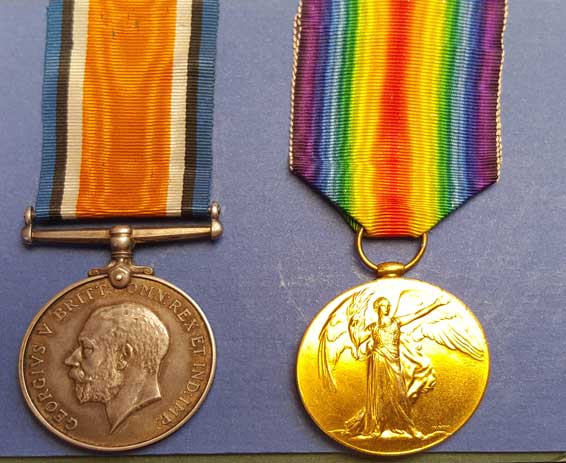33rd BATTALION AIF
Private: 2182 George MEREDITH @ Robert George Thomas MEREDITH.
Born: 23rd October 1893. Belmore, New South Wales, Australia. Birth Cert:10097/1893.
Married: 1921. Canterbury, New South Wales, Australia. Marriage Cert:6620/1921.
Wife: Amy Barbara Meredith. nee: Horton. (1892-1973)
Died: 13th March 1970. Campsie, New South Wales, Death Cert:13817/1970.
Father: William Meredith. (1859-1941)
Mother: Ellen Meredith. nee: Cameron. (1866-1935)
INFORMATION
George Meredith @ Robert George Thomas Meredith enlisted at the Royal Agricultural Show Ground in Sydney on the 10th July 1916 and was allocated to the 3rd Reinforcements, 33rd Battalion AIF. George embarked for England from Sydney on the 24th May 1916 and disembarked at Plymouth, England on the 11th October where they were marched in to the 9th Training Battalion at Larkhill.
The reinforcements proceeded overseas for France with the original members of the 33rd Battalion on the 21st November 1916 at 4:30 pm and traveled by paddle steamer ‘Mona Queen’ to France arriving November 22, 1916 at 7:00 am in Le Havre.

7th June 1917.
THE BATTLE OF MESSINES
The 3rd Australian Divisions first major offensive was at Messines Ridge on the 7th June 1917. The Australian 3rd Division was a part of the II Anzac Corps which was allotted to the first assault. The 25th New Zealand, 3rd Australian Division with the 4th Australian Division in reserve. The 4th Division were battle hardened troops who had fought many major battles.The 3rd Australian Division were having problems getting to the "jump off" point. The day before the 9th and 10th Infantry Brigades were bombarded by German Gas-Shells around Hill 63 and Ploegsteert Wood. Many of the Aussies were not wearing gas masks, but despite this they pressed on even though they received 500 casualties.
They made it to the "jump off" point but only just with some of the men from the 9th and 10th going straight over the top without stopping. The mines went up and the attack commenced behind a protective barrage. The II Anzac Corps were attacking on the right with their objective being the southern shoulder of the ridge which included Messines, the Dover and St Yves areas as far south to the east of Ploegsteert Wood.
Major General Sir John MONASH's 3rd Division had to contend with a tricky 3 mile approach out of Ploegsteert Wood and after the German gas attack, but they were not deterred. The 9th Infantry Brigade under Brigadier General: Alexander JOBSON and the 10th Infantry Brigade under Brigadier General W R NICHOLL had just made the jumping off point but some of the men did not stop, going straight into the assault from the approach march.
Their objective lay between St Yves and the Douve. The mines at Trench 127 and Trench 12 at Factory Farm were laid to aid this task. The explosions erupted a few seconds before zero hour and created craters of 200 feet in diameter, completely obliterating the German defense line as the 9th and 10th Infantry Brigades went over the top. The mine crates forced the 9th and 10th Brigades to veer to the left and right which caused some confusion with the main assault. It is testimony to the quality of training that every man knew the ground, tasks and objectives so well.
Private: 1804 John CARROLL 33rd Battalion, rushed the enemy's trench and bayoneted four of the German occupants. He then noticed a comrade in difficulties and went to his assistance, killing another German. He then attacked single handed a German Machine Gun Team, killing all three of them and capturing the gun. He later rescued two of his comrades who had been buried alive by German Shell Fire, and in spite of heavy shelling and machine gun fire he dug them out alive and saved them from certain death. John was awarded the Victoria Cross.
The German forward zone was completely engulfed and taken by the main assault. The two supporting battalions of each brigade then passed the leading battalion to continue the advance. The men were constantly re-supplied and the ridge was taken. There were many German prisoners taken during the offensive. The 3rd Division was well ahead with the 9th Infantry Brigade pushing on beyond Grey Farm, and on the right the 10th Infantry Brigade were veering left towards Septieme Barn north of Douve.
The German resistance was heavy but was generally brushed aside by tanks and artillery before the infantry had to become too involved.The 4th Bavarian Divisions Artillery had made little impact, but as the day wore on the 3rd Division and later the 4th Australian Division received many casualties from German artillery. (70% of all casualties during WW1 were from artillery).
By 9:00am nearly 6 hours after the assault began the Germans were in dissaray, but there was a major problem as the Australians received less casualties as anticipated and when ordered to dig into the ridge they had so many men, that some could not find shelter. the 35th battalion were dug in around Seaforth Farm.
The second phase of the operation was to take the Oosttaverne Line. The 3rd Australian Division would now be in reserve with the 4th Division attacking. The 9th Infantry Brigade (33-34-35-36Bn) were near Thatched Cottage facing Warneton. The river Lys was to their right and the Ploegsteert Wood was now behind them.
Once their objectives were taken the troops consolidated. A barrage to stop and counter attack was shortened and caught three battalions which had to retire. By 9:00 pm this part of the Oosttaverne Line was abandoned. At 10:45 pm General: Alexander John GODLEY ordered the 3rd and 4th Divisions to retake it. This they did by the early hours of the 8th of June.
The Battle for Messines Ridge during May-June 1917 saw 35 officers and 1,631 other ranks loose their lives.
9th Infantry Brigade Casualties.
| 33rd Battalion. AIF | 8 Officers | 382 Other ranks |
| 34th Battalion. AIF | 10 Officers | 378 Other ranks |
| 35th Battalion. AIF | 5 Officers | 431 Other ranks |
| 36th Battalion. AIF | 9 Officers | 421 Other ranks |
| 9th Machine Gun Company. AIF | 2 Officer | 17 Other ranks |
| 9th Light Trench Mortar Battery. | 1 Officer | 2 Other ranks |

FIELD DRESSING STATION, MESSINES 7th June 1917.
4th-5th April 1918
The First VILLERS-BRETONNEUX
The Strength of the 9th Infantry Brigade was about 2,250 but their casualties during the 2 days of fighting numbered 30 Officers and 635 men either killed in action or missing.
9th Infantry Brigade Casualties.4th-5th April 1918
| 33rd Battalion. AIF | 3 Officers | 82 Other ranks |
| 34th Battalion. AIF | 5 Officers | 120 Other ranks |
| 35th Battalion. AIF | 9 Officers | 282 Other ranks (including 44 missing) |
| 36th Battalion. AIF | 12 Officers | 133 Other ranks (including 1 missing) |
| 9th Machine Gun Company. AIF | 1 Officer | 18 Other ranks (including 4 missing) |
The gassing of Villers Bretonneux seemed to point to the probability of its not being attacked, but by this time air photographs had revealed the signs of imminent operations; an increase in the number of enemy batteries had also been noticed, while the roads were being registered by German artillery. There were, however, also indications that the Albert sector might be the objective of an attack which might extend to Arras and Vimy Ridge. On the 21st there was much air fighting near the Somme, and the famous airman Richthofen was brought down.1. That night a man of the 4th Guard Division, captured by the 8th Dvn , disclosed the fact that his formation had just relieved the 9th Bavarian Reserve Division in front of Marcelcave , and would attack Villers Bretonneux at 3 A.M. on the 23rd. Counter-preparations were continued, and the German railway centers were bombed, particularly Chaulnes .2 'No infantry assault materialized on the 23rd, two deserters came in from the 77th Reserve Division, just arrived from Russia, which had entered the line on 20th, south of the 4th Guard Division, opposite Cachy, and the French captured a gunner of the Guard Ersatz Division opposite Hangard. All these men said that the relief of the line divisions by " storm " divisions had been completed the infantry were ready to advance
George was treated for Gas Poisoning on the during this action at Villers-Bretonneux and he was evacuated to the Casualty Clearing Station for further treatment.
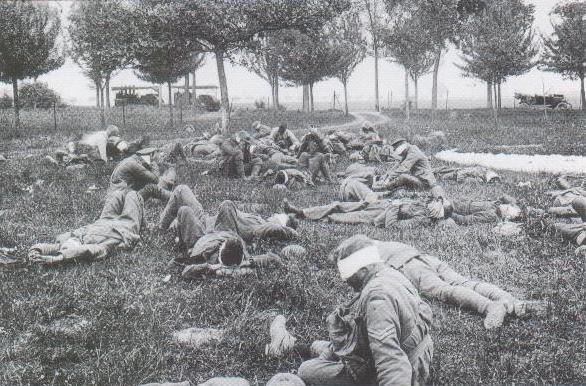
33rd men suffering from Gas Poisoning at Villers-Bretonneux.
George returned to Australia on the 11th May 1919.
George's War Medal: 52991 and Victory Medal:51573 to PTE 2128 G MEREDITH 33 BN AIF was acquired from the Lucas Collection in January 2019 and are now in the Harrower Collection.
Family Information
George was a single 22 year old Navy from Georges River Road, Central Bankstown, N.S.W.
Note: I have been unable to find any more records for George Meredith. Records attached relating to George Edward Meredith are not relating to George Meredith. Claim for medals from his wife A Meredith of 11 McKenzie Street, Belmore. No record of marriage of George Meredith and an A Meredith? His replacement RAS Badge was issued to him on the 7th August 1935 and his Medals were issued to him on the 23rd of September 1949.
George is an abbreviation of his full name which is Robert George Thomas Meredith. Confirmed as the same person.
Military Records
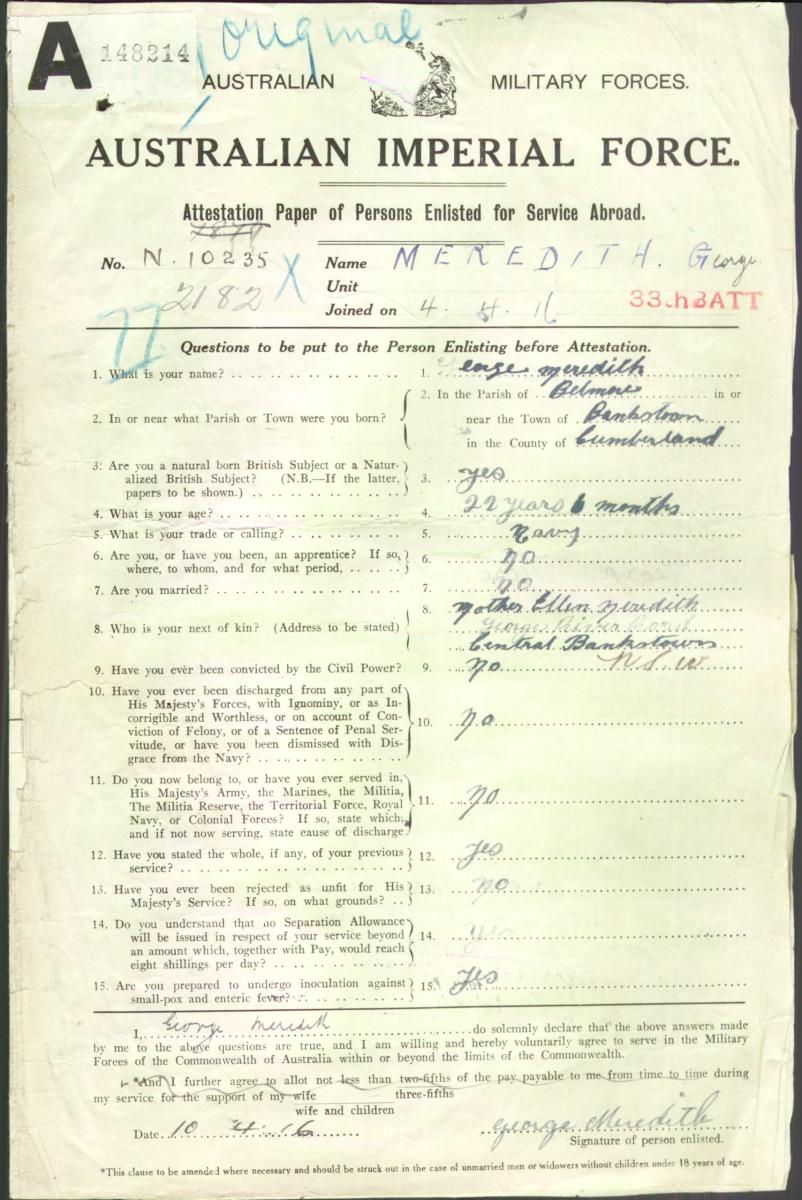
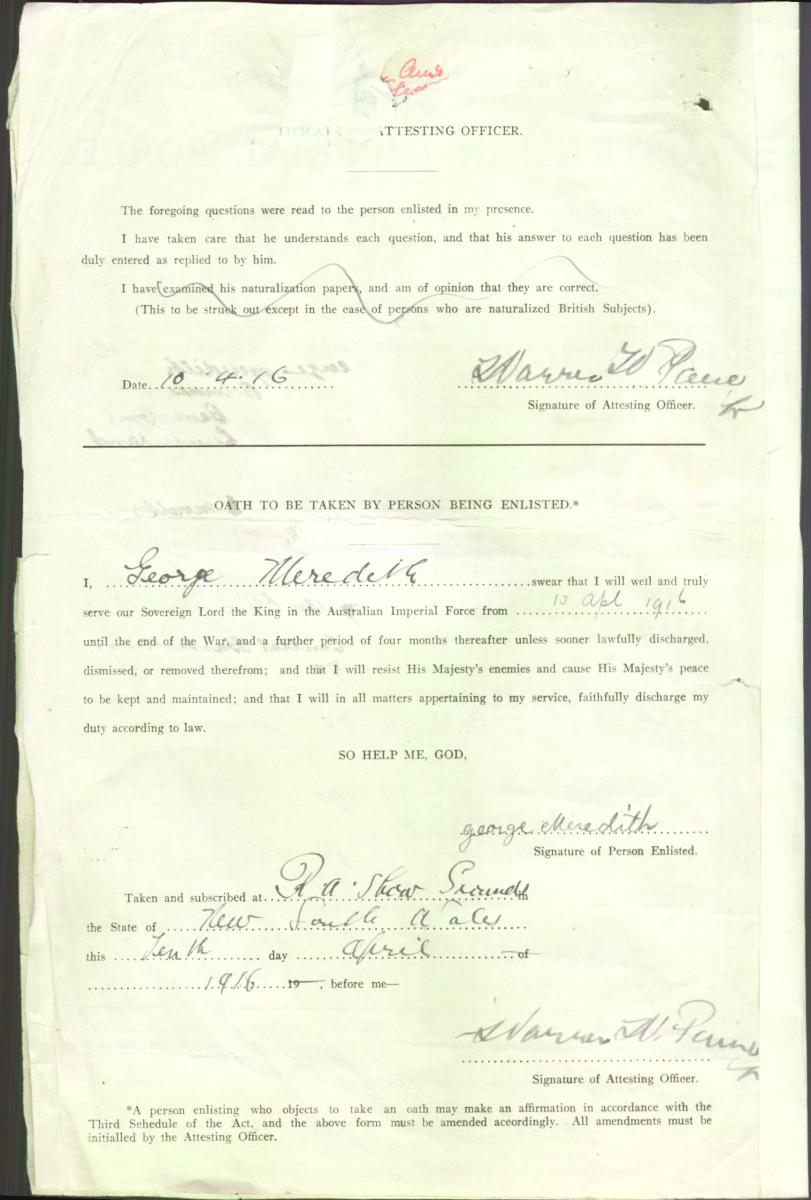
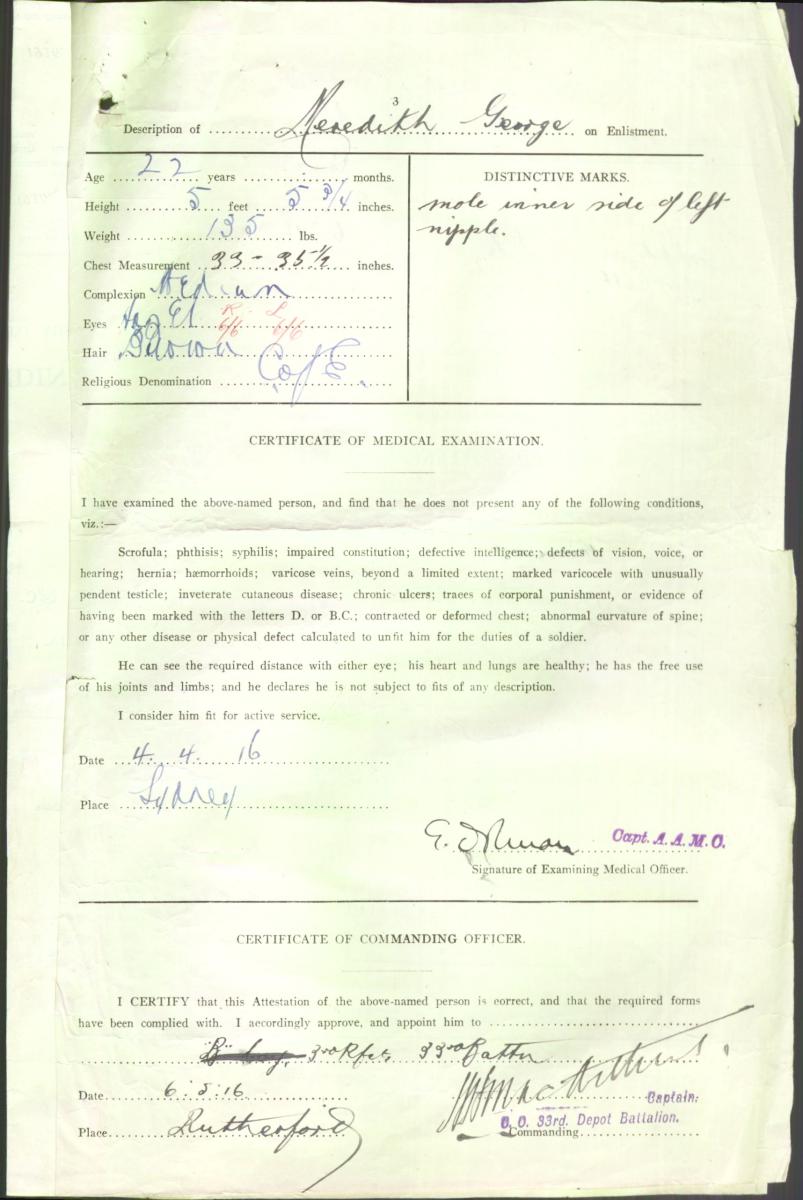
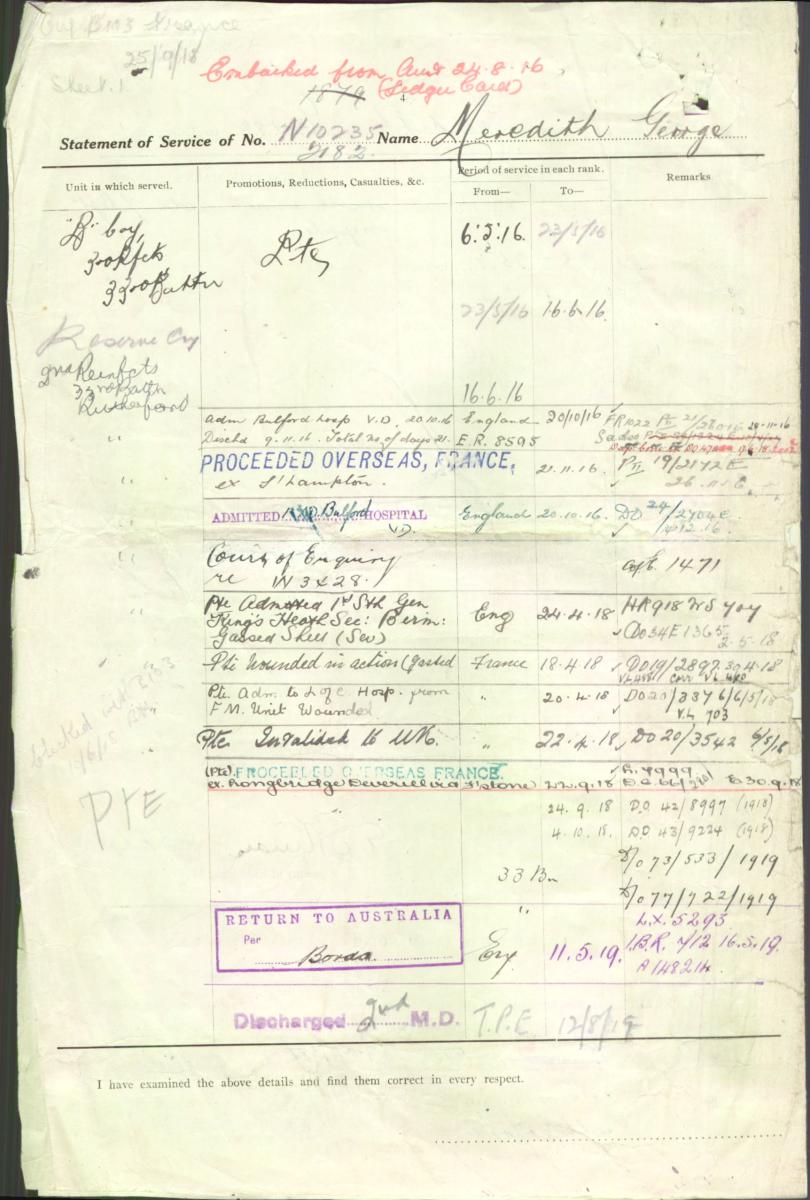
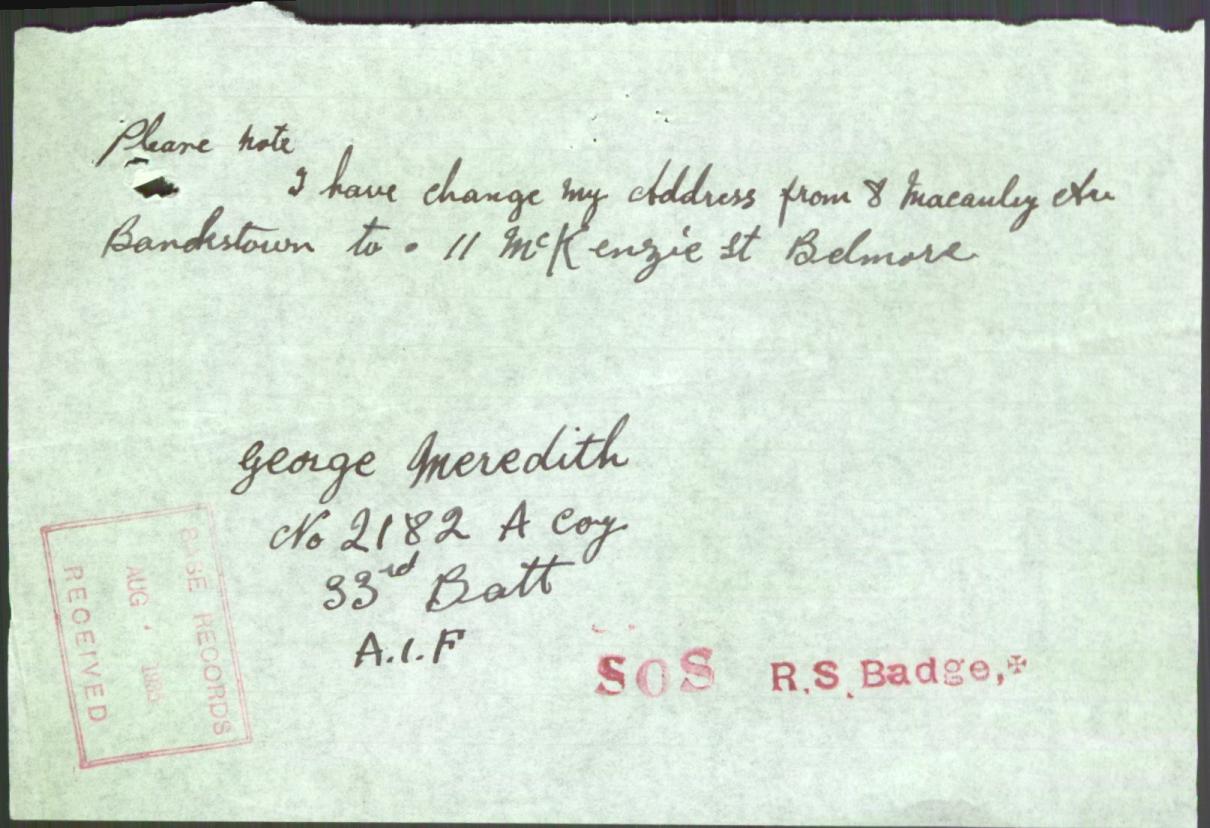

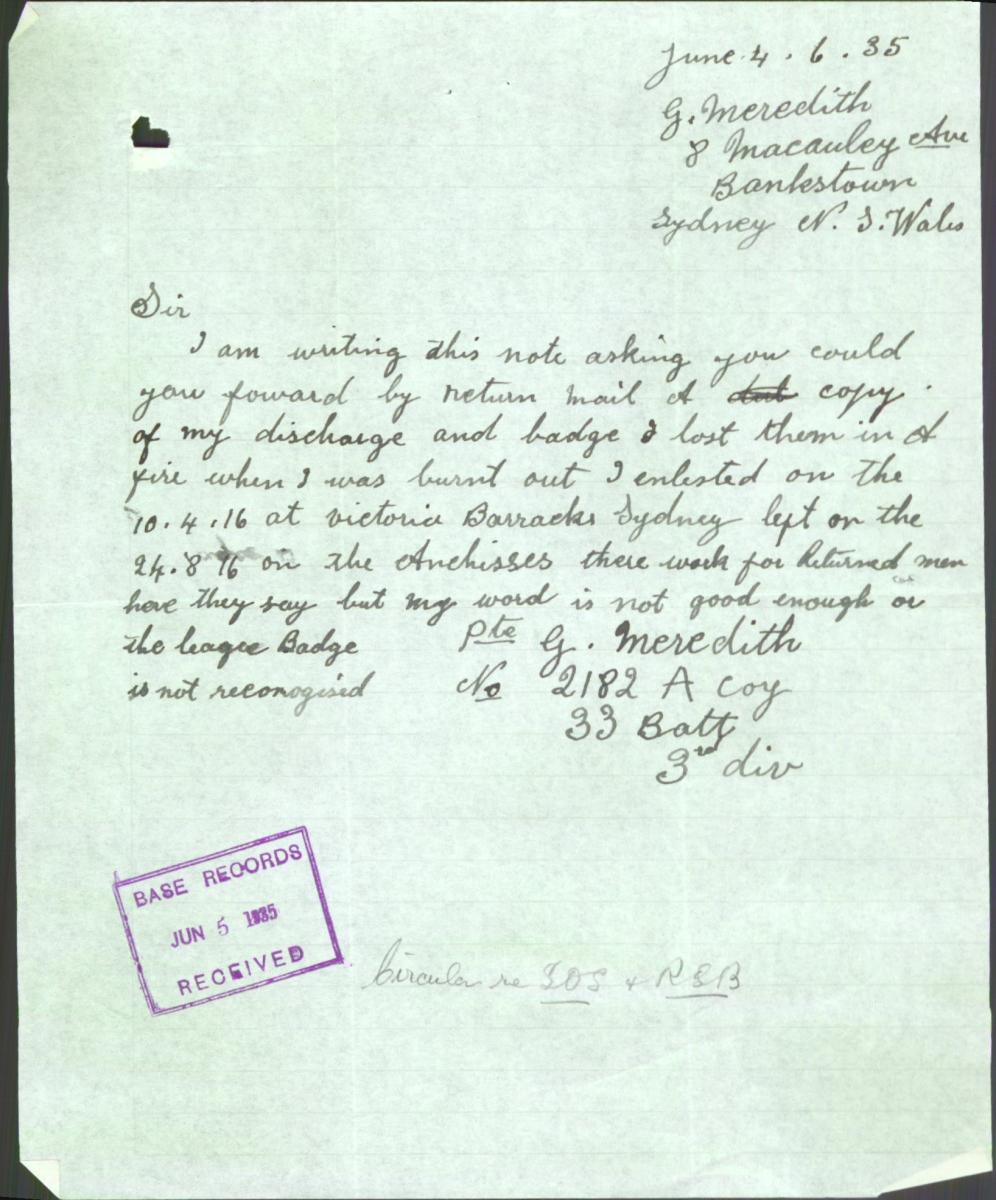

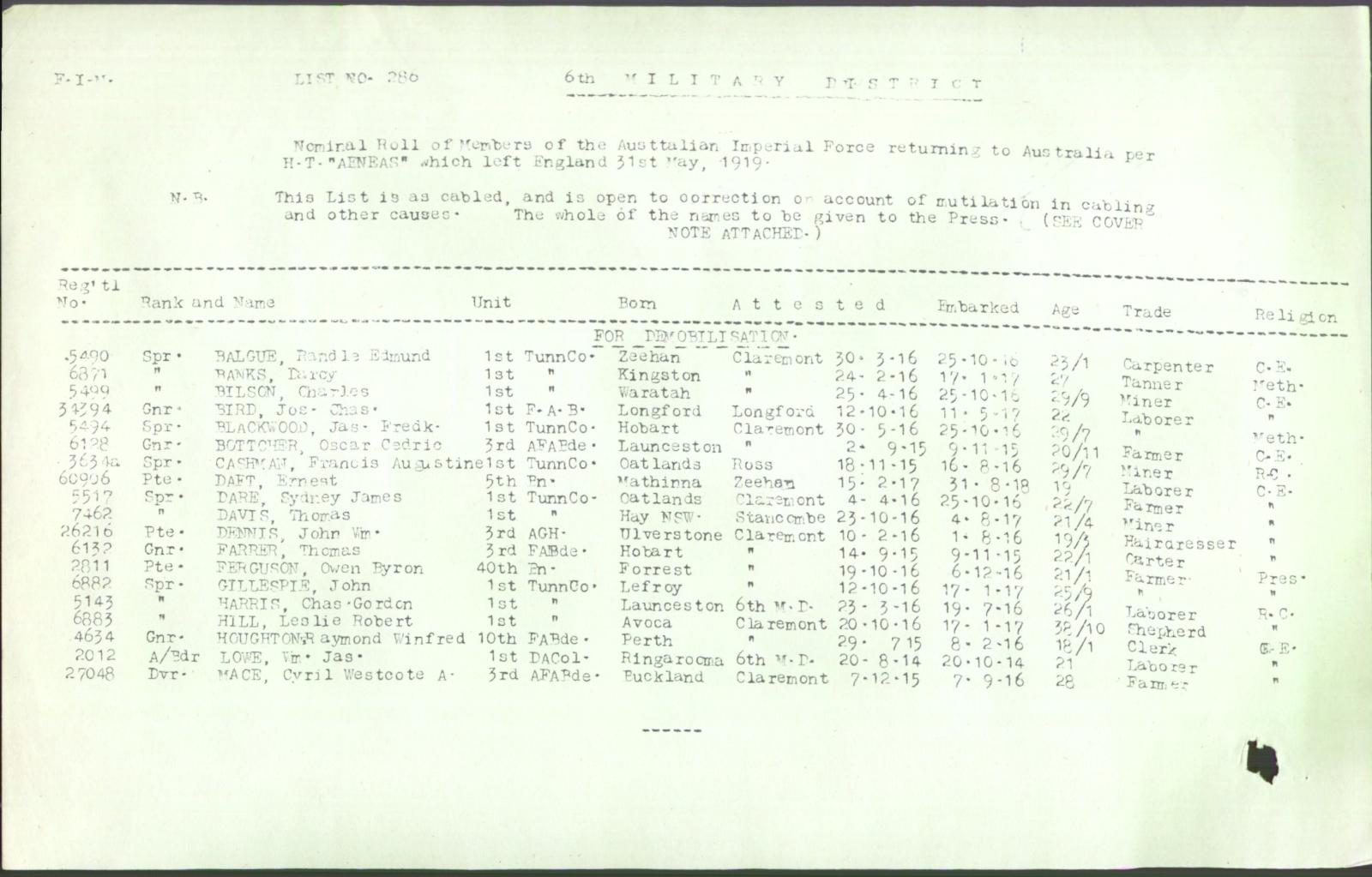


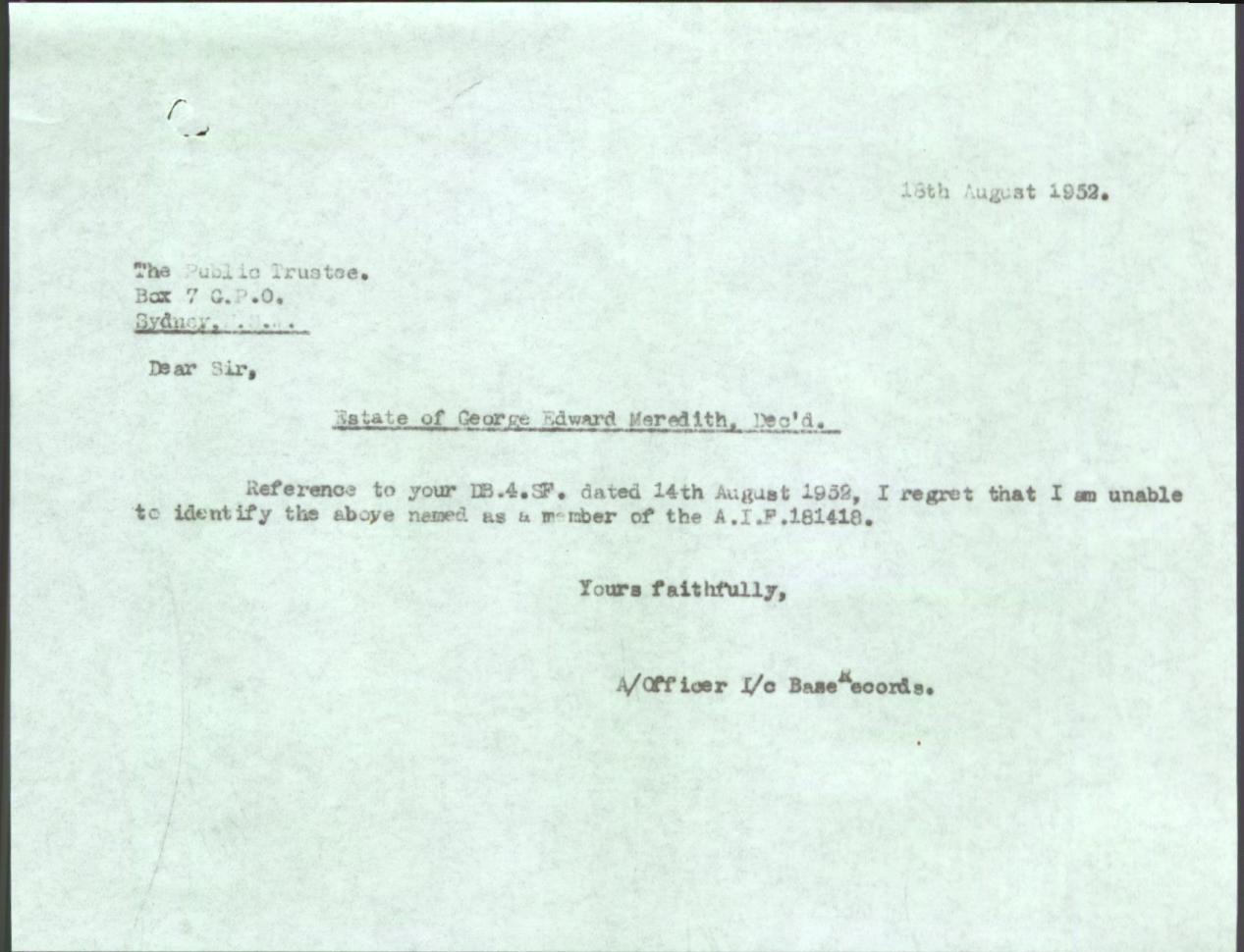

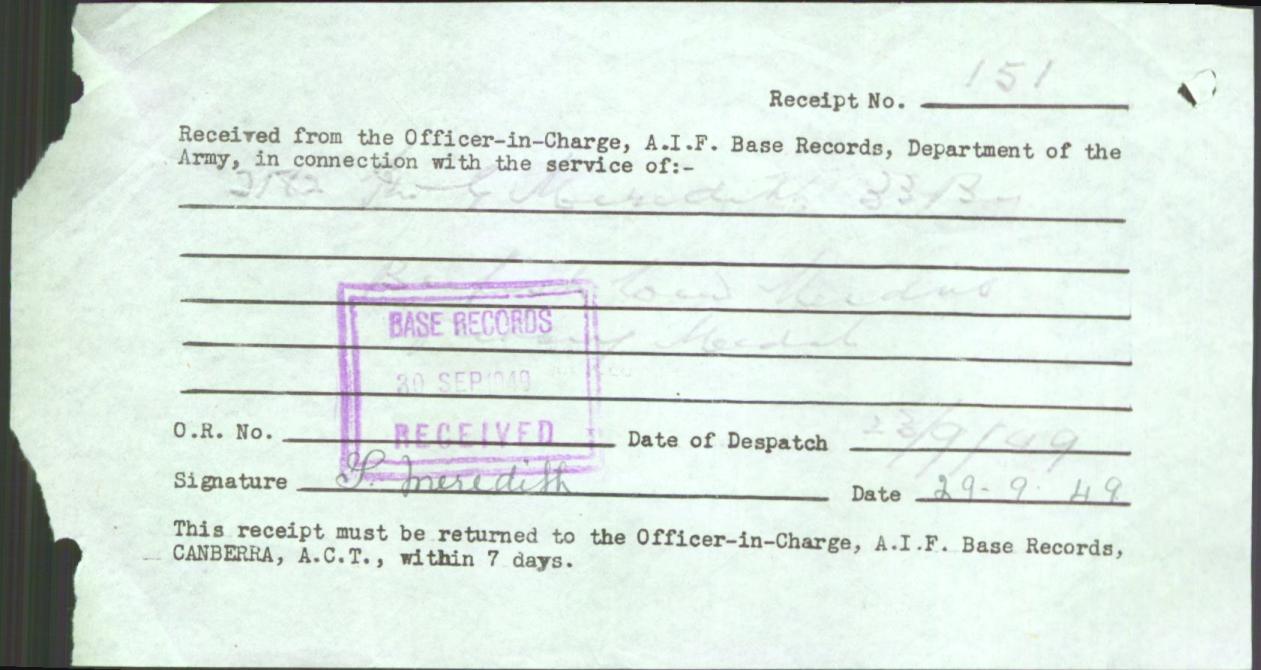
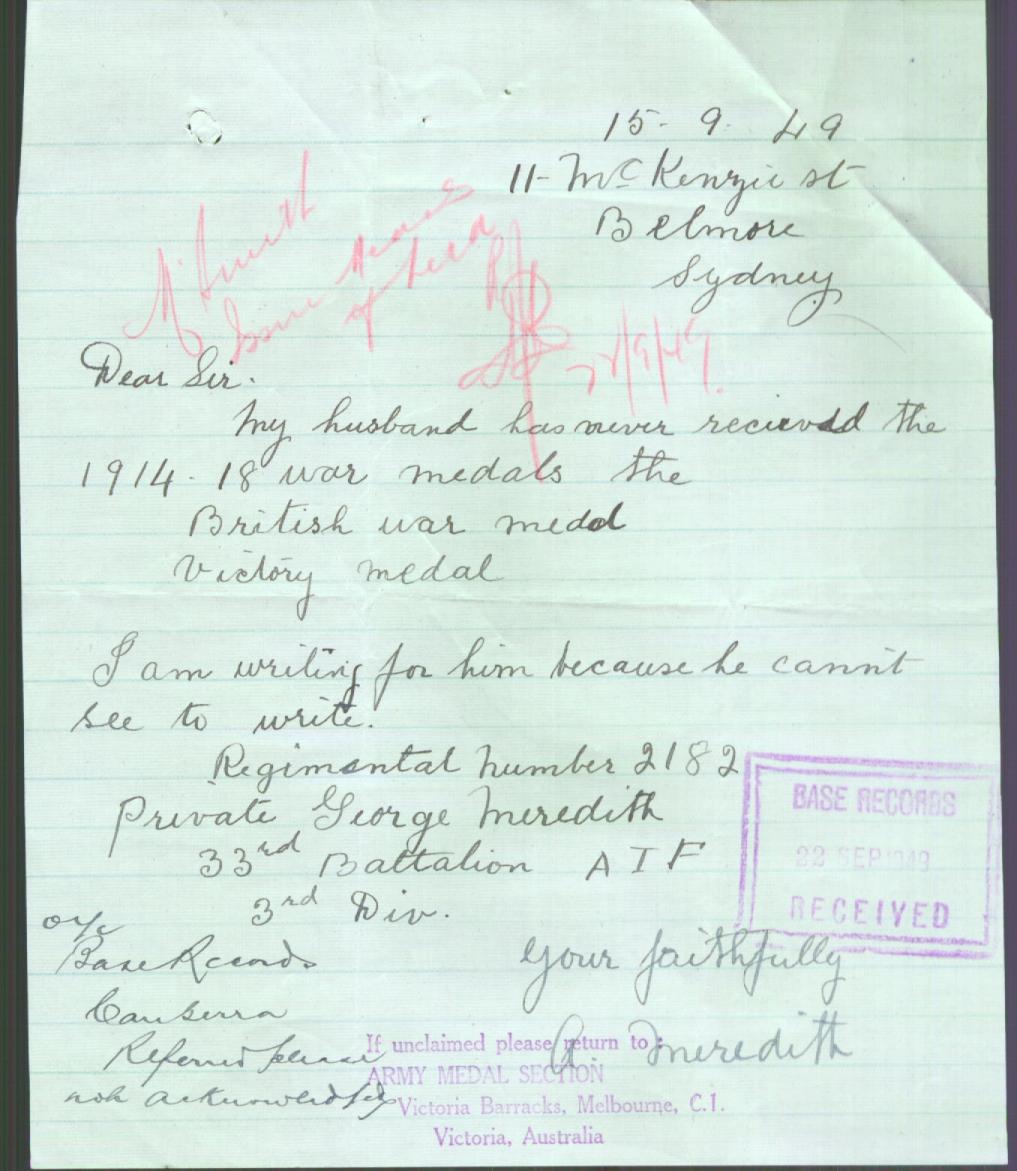



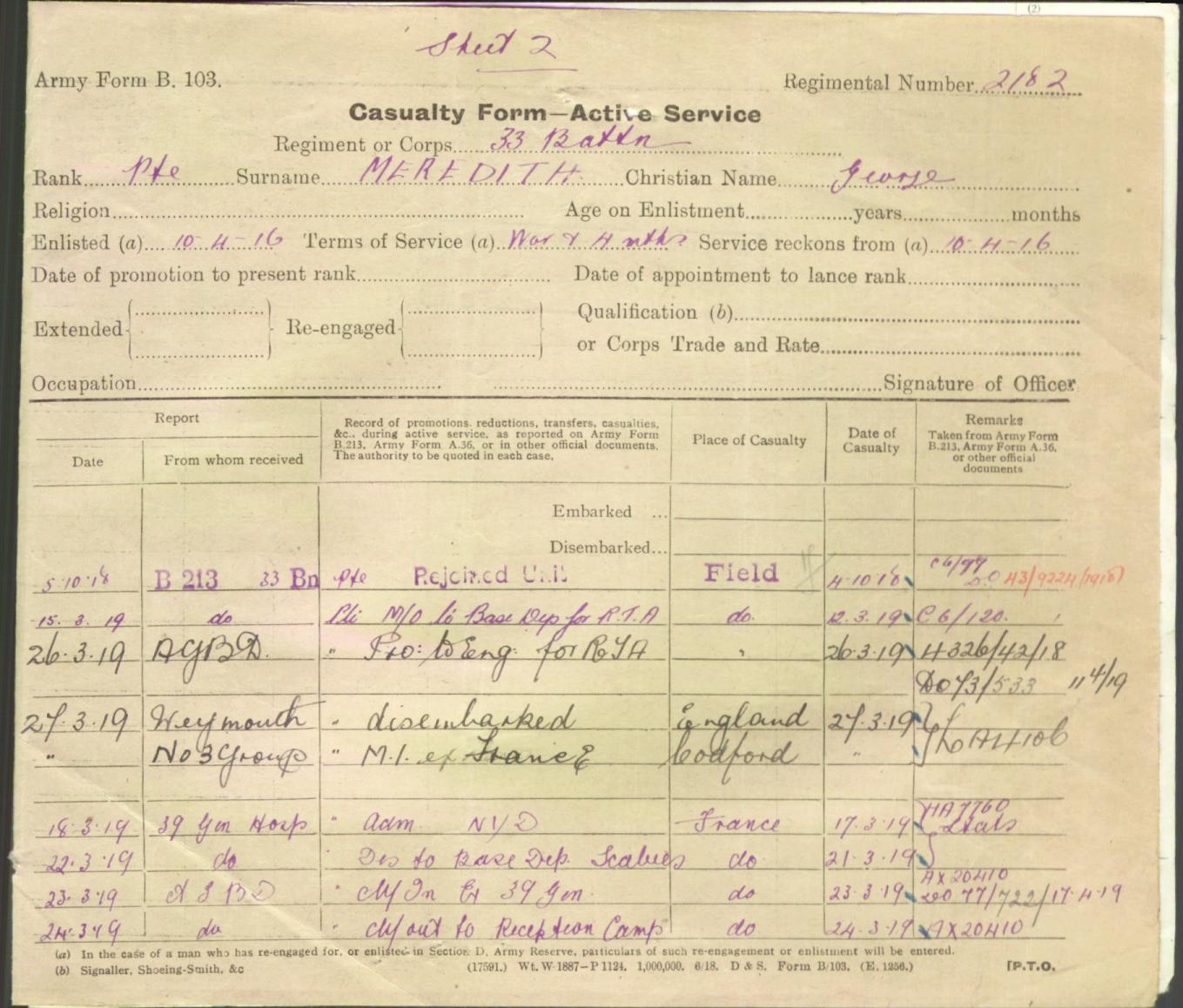
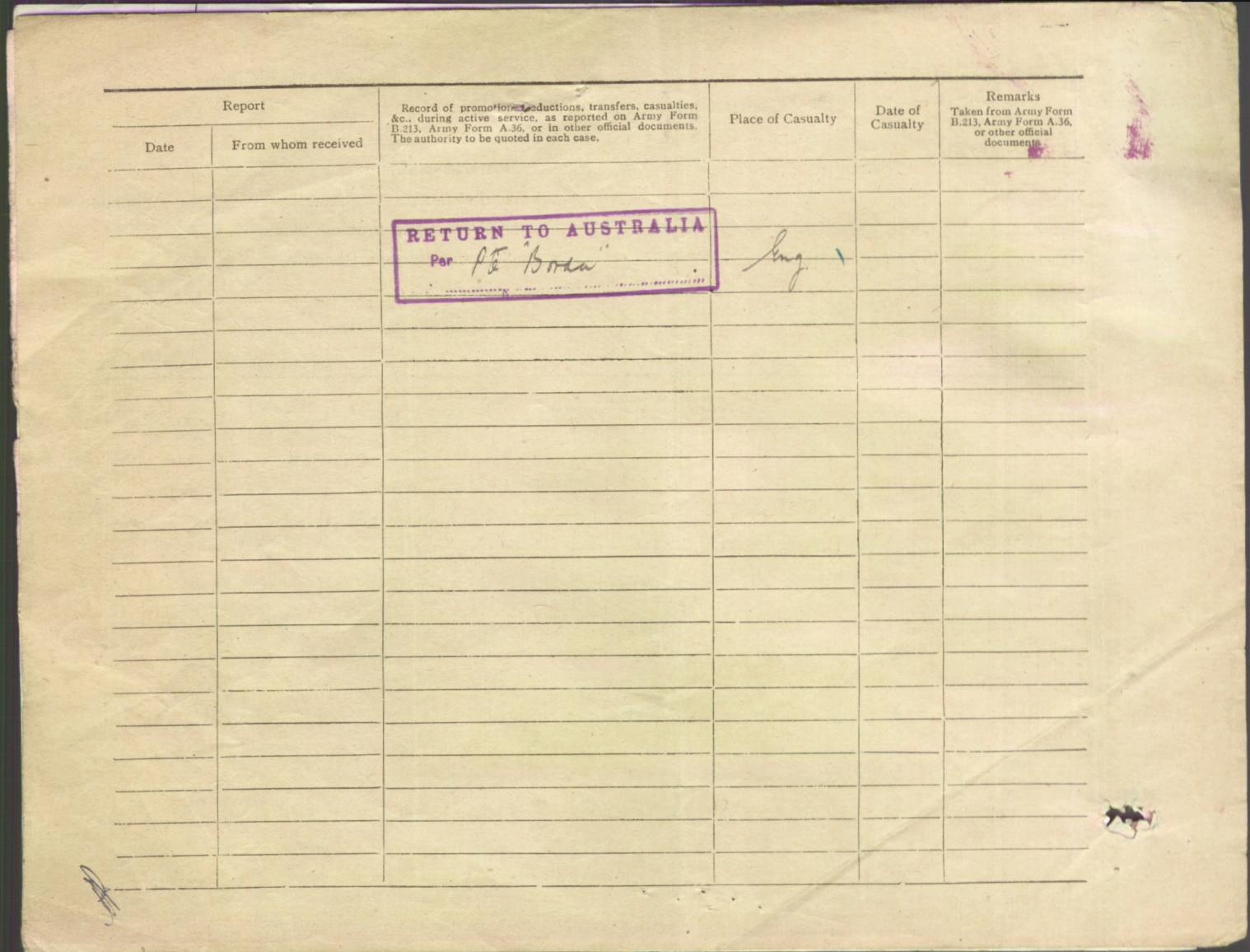

© Commonwealth of Australia (National Archives of Australia)
Under Construction: 23/01/2019-16/02/2019.
